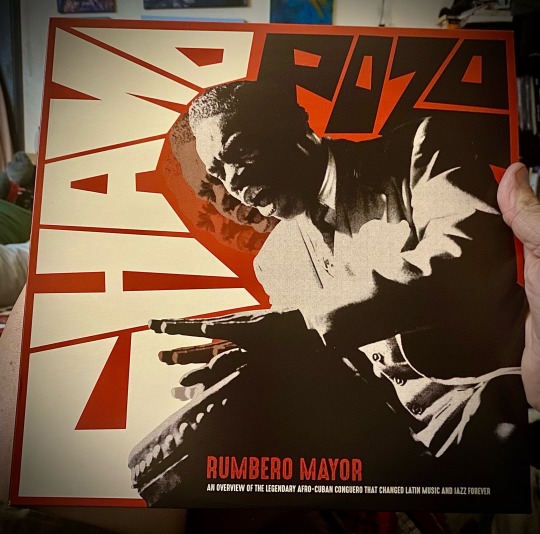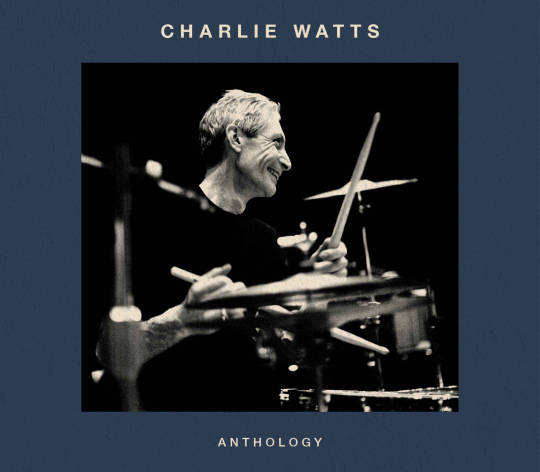#chano pozo
Text

James Moody And His Modernists With Chano Pozo, 1952.
Cover artwork by Julien Alberts.
13 notes
·
View notes
Text
youtube
6 notes
·
View notes
Text

9 notes
·
View notes
Text
Dizzy Gillespie's Groundbreaking Rhythms: Unraveling "The Complete RCA Victor Recordings"
Introduction:
Dizzy Gillespie, the eminent trumpeter and composer, revolutionized jazz with his groundbreaking fusion of bebop and Latin rhythms. “The Complete RCA Victor Recordings,” a 1995 compilation, unveils Gillespie’s transformative journey through two decades of recording sessions for RCA Victor. This blog post delves into the significance of this compilation, exploring how it not only…

View On WordPress
#Afro-Cuban jazz#Bebop#Chano Pozo#Charlie Parker#Classic Albums#Dizzy Gillespie#George Russell#Jazz History#The Complete RCA Victor Recordings
0 notes
Text
Charlie Watts "Anthology"
BMG, 2023
Na dwóch płytach CD zebrało wydawnictwo BMG antologię jazzowych nagrań wybitnego perkusisty Charliego Wattsa. Jazzowa kariera perkusisty zespołu Rolling Stones od dawna nie jest zaskoczeniem dla fanów. Anthology pozwala przekrojowo spojrzeć na dokonania Wattsa na tym polu.
Obok perkusisty usłyszmy w nagraniach – w różnych konfiguracjach, antologia zawiera bowiem utwory nagrane w…

View On WordPress
#Adrian Staines#Alan Skidmore#Andrew Hughes#Annie Whitehead#Anthony Kerr#Arnold Goodger#Benny Goodman#Bernard Fowler#Bill Eyden#Bill Lesage#Billy Strayhorn#Blondie Chaplin#BMG#Bob Hall#Bobby Wellins#Brian Lemon#Chano Pozo#Charlie Parker#Charlie Watts#Chick Webb#Chris Pyne#Colin Smith#Cortney Pine#Dan Fisher#Danny Moss#Dave Defries#Dave Green#Dennis Cotton#Dick Morissey#Duke Ellington
0 notes
Text
“Manteca”--Dizzy Gillespie Big Band with Chano Pozo (1947)
“The jazz standard ‘Manteca’ was the product of a collaboration between Charles Birks ‘Dizzy’ Gillespie and Cuban musician, composer and dancer Luciano (Chano) Pozo González. ‘Manteca” signified one of the beginning steps on the road from Afro-Cuban rhythms to Latin jazz. In the years leading up to 1940, Cuban rhythms and melodies migrated to the United States, while, simultaneously, the sounds of American jazz traveled across the Caribbean. Musicians and audiences acquainted themselves with each other’s musical idioms as they played and danced to rhumba, conga and big-band swing. ...”
LOC [PDF]
W - Manteca (song)
Dizzy Gillespie, Chano Pozo, and Afro-Cuban Jazz
Tracks Unwrapped - Manteca (Video)
amazon

2 notes
·
View notes
Link
0 notes
Text
A Short History of the Bongos
A Short History of the Bongos
https://www.denverpercussion.com/a-short-history-of-the-bongos/
The bongos, those iconic drums that bring a lively Latin flavor to music, have a very interesting history. Originally hailing from Cuba, they made their way into the hearts and hands of musicians worldwide.
These lively instruments trace their roots back to the Afro-Cuban percussion traditions of the late 19th century. Derived from the larger Afro-Cuban drums, the bongos were initially created as a portable and versatile alternative. The instrument consists of two small, single-headed drums connected by a wooden or metal bridge.
In the early 20th century, bongos gained popularity in Cuban dance bands. As Cuban music began to spread to other parts of the world, so did the bongos. They found their way into jazz, particularly during the Latin jazz explosion of the 1940s and '50s, thanks to musicians like Chano Pozo and Desi Arnaz. The distinctive sound of the bongos added a vibrant and percussive element to jazz compositions.
The bongos continued to evolve and found their place in various musical genres, including salsa, mambo, and even rock and pop. They became a staple in Latin music, and their rhythmic patterns were woven into the fabric of countless songs.
Over the years, bongo designs and construction techniques have evolved. Modern bongos often feature synthetic drumheads, metal hardware, and adjustable tension rods, allowing drummers to fine-tune their sound. Bongo players utilize a combination of open tones, slaps, and muted tones to create a diverse range of sounds and dynamics.
The bongo drums Denver shops offer today are cherished not only for their distinctive sound but also for their cultural significance. They serve as a bridge between different musical traditions and continue to inspire musicians to explore new rhythmic possibilities.
First Posted right here: A Short History of the Bongos
0 notes
Link
0 notes
Video
youtube
5 notes
·
View notes
Text
JazzX5#347. Dizzy Gillespie: "Manteca" [At Newport (1957)] [Minipodcast de jazz] Por Pachi Tapiz
JazzX5#347. Dizzy Gillespie: “Manteca” [At Newport (1957)] [Minipodcast de jazz] Por Pachi Tapiz
“Manteca”
Dizzy Gillespie: At Newport (Verve, 1957)
Dizzy Gillespie Big Band: Dizzy Gillespie, Talib Dawud, Lee Morgan, Ermit V. Perry, Carl Warwick, Chuck Connors, Al Grey, Melba Liston, Ernie Henry, Jimmy Powell, Benny Golson, Billy Mitchell, Pee Wee Moore, Wynton Kelly, Paul E. West, Charlie Persip. El tema es una composición de Gil Fuller, Dizzy Gillespie y Chano Pozo.
© Pachi Tapiz, 2021
Más…

View On WordPress
#Al Grey#Benny Golson#Billy Mitchell#Carl Warwick#Chano Pozo#charlie persip#Chuck Connors#dizzy gillespie#Dizzy Gillespie Big Band#Ermit V. Perry#Ernie Henry#Gil Fuller#JazzX5#Jimmy Powell#lee morgan#Melba Liston#Minipodcast#Newport#Pachi Tapiz#Paul E. West#Pee Wee Moore#podcast de jazz#Talib Dawud#Verve#wynton kelly
1 note
·
View note
Photo

Luciano Pozo González, better known as Chano Pozo (January 7, 1915 in Havana - December 3, 1948 in New York City) was an Afro-Cuban jazz percussionist, singer, dancer and composer who played a major role in the founding of Latin jazz. Though he died young of unnatural causes, no discussion of Latin jazz is complete without mentioning his name and no discussion of the trumpet giant Dizzy Gillespie, the godfather of Latin jazz in the U.S., can begin without the name of Pozo, who was the first in a long line of Latin percussionists in Dizzy's various bands. Dizzy's dozens of Latin-flavored compositions, including the hit song "Manteca" and "Tin Tin Deo" (both co-written by Pozo), "Fiesta Mojo" and others - have Afro-Cuban drumming derived from the ritual rhythms of West Africa as their rhythmic backbones. Despite a short stint in Dizzy's band abbreviated by Chano's early death, Pozo's influence could be felt in Dizzy's playing and compositions for decades, which Dizzy acknowledged without hesitation. percussionist. To survive the racial marginalization he faced in Cuba, he began work cleaning shoes and selling newspapers. His made his first performances as a dancer in a Havana troupe known as "The Dandy". His brother was the famous Cuban trumpeter Felix Chapotín.
48 notes
·
View notes

